Both Barrels North Island Roundup Aug 2016
- 29/08/2016
NORTHLAND REGION
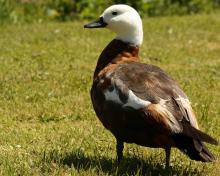 Starting at the top of the island, Northland Region will hold special open seasons next summer – the first for paradise shelduck is on the weekend of 25 and 26 February 2017.
Starting at the top of the island, Northland Region will hold special open seasons next summer – the first for paradise shelduck is on the weekend of 25 and 26 February 2017.
The limit for parries on this weekend is 20 birds per day per hunter for all areas, and the shooting hours are from 6.30am to 6.30pm.
The second special season for pukeko (bag limit 12) and black swan (bag limit 15) runs for nine days from 25 February to 5 March, 2017, from 6am to 8pm.
Hunting within 300 metres of any urban sewage oxidation ponds is prohibited during both the special 2017 seasons.
AUCKLAND / WAIKATO
REGION SEASON WRAP
When we do our game bird harvest phone surveys we often get asked, “How did other hunters get on?”
It’s not a straightforward question to answer because fortunes vary a great deal.
We have some hunters on the Hauraki Plains, for instance, competing to see whose maimai gets their opening day limits first.
That’s three hunters and 60 birds in each maimai; 10 mallards and 10 parries each.
Other hunters in other areas might be lucky to see 10 birds all weekend, yet alone in range.
So it’s still quite variable out there but there’s a lot more positivity compared with two or three seasons back.
People are generally seeing more birds, and many are doing much better.
Some say it was the best season in years while others are anything but happy. Fortunately the latter aren’t too common.
SUB-GAUGE EXCEPTION Auckland / Waikato councillors discussed a letter from the Minister of Conservation to the New Zealand Fish and Game Council on the lead shot exemption for sub gauges.
Auckland / Waikato councillors discussed a letter from the Minister of Conservation to the New Zealand Fish and Game Council on the lead shot exemption for sub gauges.
A wide range of views were expressed by Councillors on the issue, especially the impact on junior shooters who use 410 gauge shotguns.
Shotguns like Stefan Dyer's 16 gauge shown could soon be a thing of the past for duck-hunting kids.
Councillors agreed that the review of the sub-gauge exemption by the NZF & G Council could be moved forward.
However they were adamant that there should be no change to the regulations for the 2017 season due to the potential impact on importers and retailers.
BAND RETURNS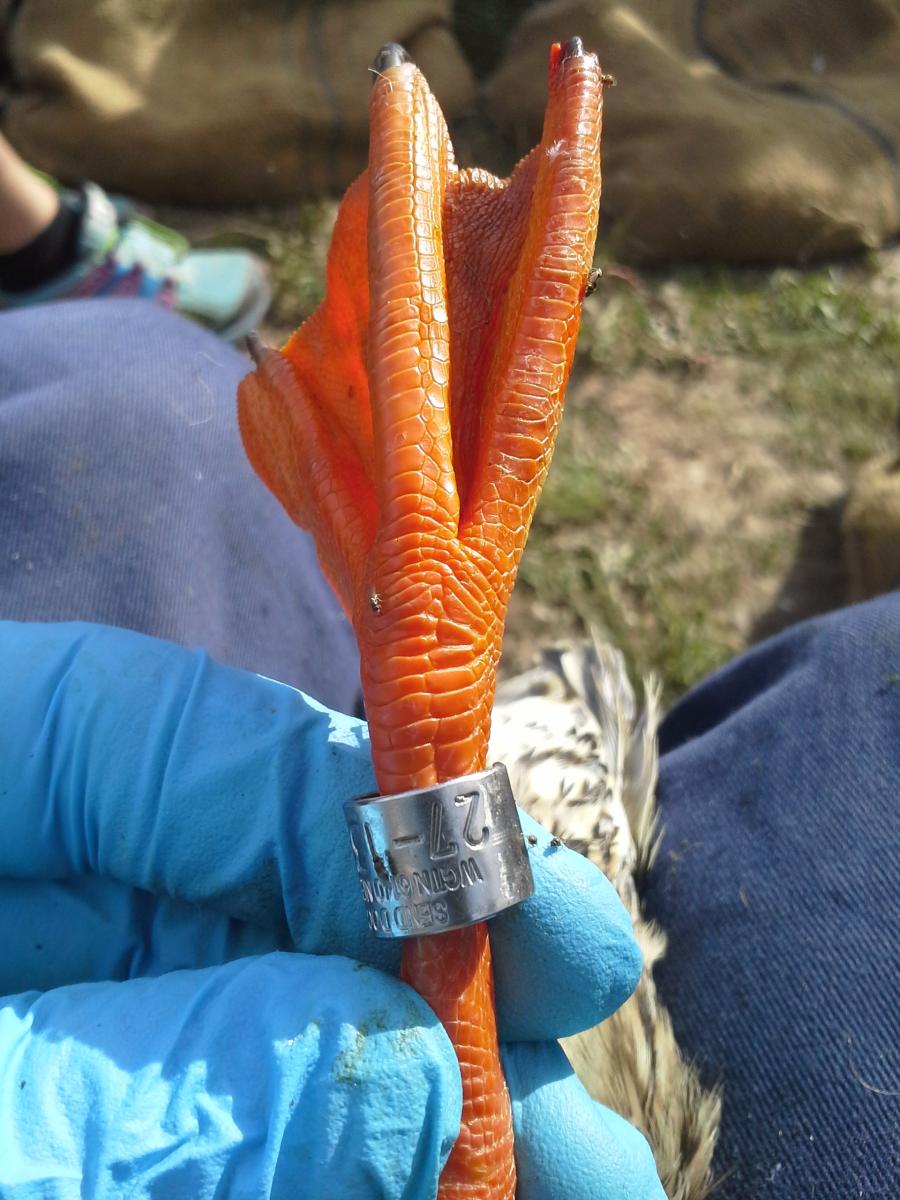 One of things we have learnt this season is that when we ask about bands to be told: “Don’t worry about those, Eddie sent ours in,” all too often, he didn’t. So assume nothing, ring your mate and ask if they’re still on the fridge.
One of things we have learnt this season is that when we ask about bands to be told: “Don’t worry about those, Eddie sent ours in,” all too often, he didn’t. So assume nothing, ring your mate and ask if they’re still on the fridge.
As one guy said, “I just haven’t got off my butt and done it”.
We admire his honesty, but don’t make the same mistake. This is one of the easiest but important ways you can help manage your resource – just ring 0800 BIRD BAND.
PREDATOR COMPETITIONS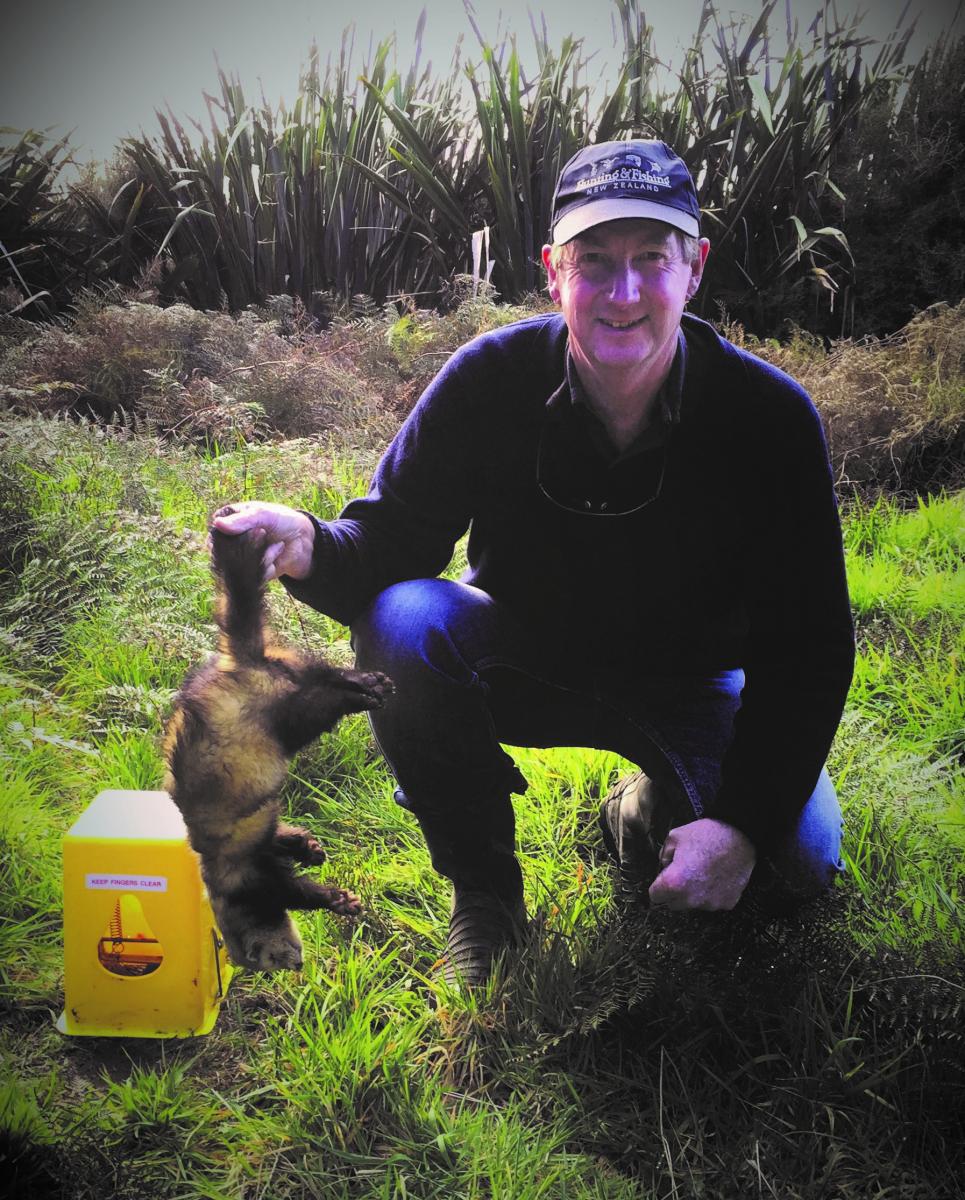 Hunting & Fishing NZ is continuing its support of the Waterfowl Enhancement Trust’s ‘Swamp Comp.’
Hunting & Fishing NZ is continuing its support of the Waterfowl Enhancement Trust’s ‘Swamp Comp.’
A mouth-watering array of prizes are on offer for ferret, stoat and weasel tails, frozen and delivered to Hunting & Fishing stores to enter the prize draw.
There’s first rate information about how to trap these and other critters in their latest spring 2016 catalogue. Last year a record 2071 tails were collected and this year could be better still.
Andy Tannock with a Timms trap and ferret customer.
LAKE WAIKARE CONSENT
The consents held by the Waikato Regional Council for the discharge from Lake Waikare to the Whangamarino Wetland are currently being reviewed.
This review is a condition of the consent held by the Regional Council and DOC and Fish & Game have put in submissions.
All parties are working together to identify sediment reduction targets in the Lake Waikare discharge and possible options for achieving them.
These have long been some of the most important wetlands for waterfowl in our region.
REGULATIONS REVIEW
Just a reminder, that if there’s some change you want to see, or something you want to defend, the forthcoming regulation review is going to be your only chance in the next three years.
Whether you submit as an individual or as part of a Fish & Game club, don’t put off that submission any longer or you may miss out.
You may even want to attend the Council meeting where the review is being considered. This is your chance to see democracy in action or grind your teeth for three more years.
TEMPORARY CLAIM STANDS
It’s being alleged that some people are using their temporary claim tag and the plastic claim tag that follows, to claim two spots. This is of course, illegal. But is it just speculation or is it fact?
If you know someone who has done this, please contact us. All calls are treated confidentially.
THE COMING SEASON…
It’s all over for another year. Now’s the time to plan the maimai repairs over summer, get the shotgun fixed, mend the decoy cords, train a new pup and do all those other things we leave to the last moment and wish we’d done sooner.
EASTERN REGION
COUNTING SHOVELER DUCKS
Many would say the Australasian shoveler duck, or spoonie, is our prettiest game bird.
Keeping tabs on the New Zealand population is quite difficult because they’re so mobile.
Flocks can cover huge distances in a relatively short time. So Fish & Game staff and volunteers endeavour to count them on the same day throughout the country.
This is the 16th year we’ve been counting them and although we don't manage to count them all, we hope we’re counting enough of them to provide a robust index of population change over time.
Nearly 300 sites are counted each year on 8 August.
The beginning of August was chosen as the birds congregate in flocks just prior to heading off to nest.
At this stage we don't have all the survey data in so we’re not sure how the count compares with other years, but we were expecting to count about 10,000 shoveler.
Having said that, there was a lot of rain just prior to the count and some of the southern waterways were frozen, so it may be that birds dispersed to more ephemeral or temporary habitat.
REPOROA MALLARD NUMBERS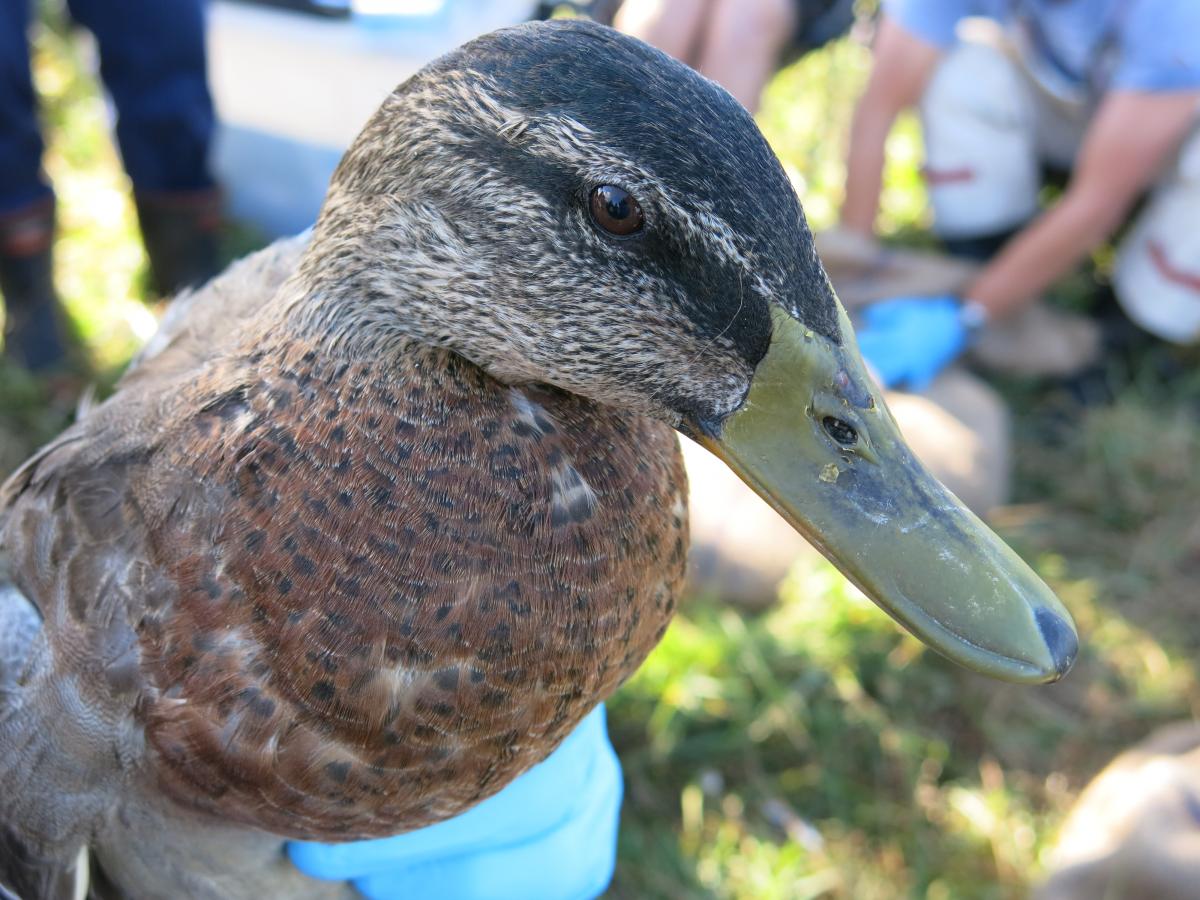 The Reporoa mallard population has been suffering for a few years now.
The Reporoa mallard population has been suffering for a few years now.
There are probably many reasons for this including loss of good habitat in the Waikato (the collapse of the Waikato lakes aquatic weed beds), drainage of farmland, and management of the Waikato River for hydropower generation and probably over-harvest by hunters.
The Eastern Region Fish & Game Council is trying to determine the extent of the problem (aerial mallard counts), and what we can do about it.
Staff recently flew over the area to try assess habitat status and potential opportunities to enhance existing habitat.
What was very evident was the lack of habitat (other than the main Waikato River) in the southern part of Reporoa-Broadlands.
We are hoping to identify areas that would be suitable for funding from the Waikato Catchment Enhancement Fund (WCEET). This fund was set up by Mighty River Power (now Mercury) to off-set the effects of the hydropower operations.
Many of the hand reared mallard release around Broadlands are now away nesting so it will also be interesting to see if this makes a difference to the local population.
TAURANGA HARBOUR BLACK SWAN
Black swan have received some ill-informed bad press lately (see http://hunting.fishandgame.org.nz/newsitem/fish-game-corrects-black-swan...).
Some Tauranga residence were upset at the number of swan on the harbour and claimed that tens of thousands are polluting the waters, eating all the seagrass (Zostera) and killing off flounder.
The only study that we are aware of in NZ on swan (conducted by NIWA) suggested the birds either recycle nutrients or may even remove them from the local environment.
Fish & Game has been counting the population since the early 90's and has never encountered tens of thousands of birds.
In fact, over winter the population falls as low as 400-500.
We have just finished the 3 August aerial count where we probably saw more rays than the 485 resident black swan.
In about May the majority of swan leave to breed.
As for eating flounder, this seems an odd claim – they do have a small parasite or fluke that looks like a baby flounder so perhaps this has mistakenly been identified as a flounder?
HAWKE'S BAY REGION
DON'T PUT YOUR SHOTGUN AWAY JUST YET
Every year game bird hunters put their shotguns away at the end of the season and don't pick them up until opening weekend the next season.
This many months of no shooting practice leads to poor shooting. Like everything else, the more you practice the more proficient you become.
We at Hawke’s Bay Fish & Game, encourage all you hunters to keep up your shooting during the off season.
Game bird hunters can join a local gun club and attend their shoots. By joining a local gun club, you not only get more practice but you get to shoot with other who're proficient and can provide you with tips on how you can improve your shooting.
Shooting non-protected species during the off season will also help improve your shotgunning skills.
In Hawke’s Bay, feral pigeons are abundant and provide challenging shooting. You can hunt them as if you would waterfowl by setting up decoys and a hide.
Besides providing excellent shooting, pigeons are also good to eat and are another source of wild food for the table.Right: Feral pigeons provide plenty of off season shooting.
TIME TO START CREATING HABITAT ROUND YOUR POND OR WETLAND
With the main game bird seasons over, it is time to think about providing habitat for waterfowl to ensure their populations stay healthy. What should you plant? Quality nesting habitat is limited through much of Hawke's Bay.
We encourage people to plant buffers with thick vegetation around their ponds and wetlands to provide quality nesting habitat.
Planting sedge species provide good nesting cover and also food for waterfowl. We recommend planting Carex secta (Purei), Carex virgata (Pukio), Carex geminata/lessiona, and Cyprerus ustalatus (umbrella sedge).
Planting sedges around your pond will provide nesting habitat for waterfowl.
TARANAKI REGION
SUMMER HUNTS
The Taranaki summer shoot for parries is now confined to Game Management Area C (Taranaki province including all of the Stratford District), as hunter participation in the Whanganui (Area B) summer shoot has fallen to low levels in recent years.
And many keen landowner/hunters preferred not to disturb birds prior to the main game season in May.
The two weekend hunting season in Area C has proven to be effective at dispersing paradise shelduck after the moult, and of course also provides an additional hunting opportunity.
The special paradise shelduck season weekend hunts are on 25 and 26 February 2017 and 4 and 5 March 2017, from 6.30am to 8pm. The daily bag limit is ten birds.
All hunters, including land occupiers, must hold a valid Taranaki Special Season Hunting Permit to participate. They are available from the Taranaki Fish and Game office and selected retail agents.
WELLINGTON REGION
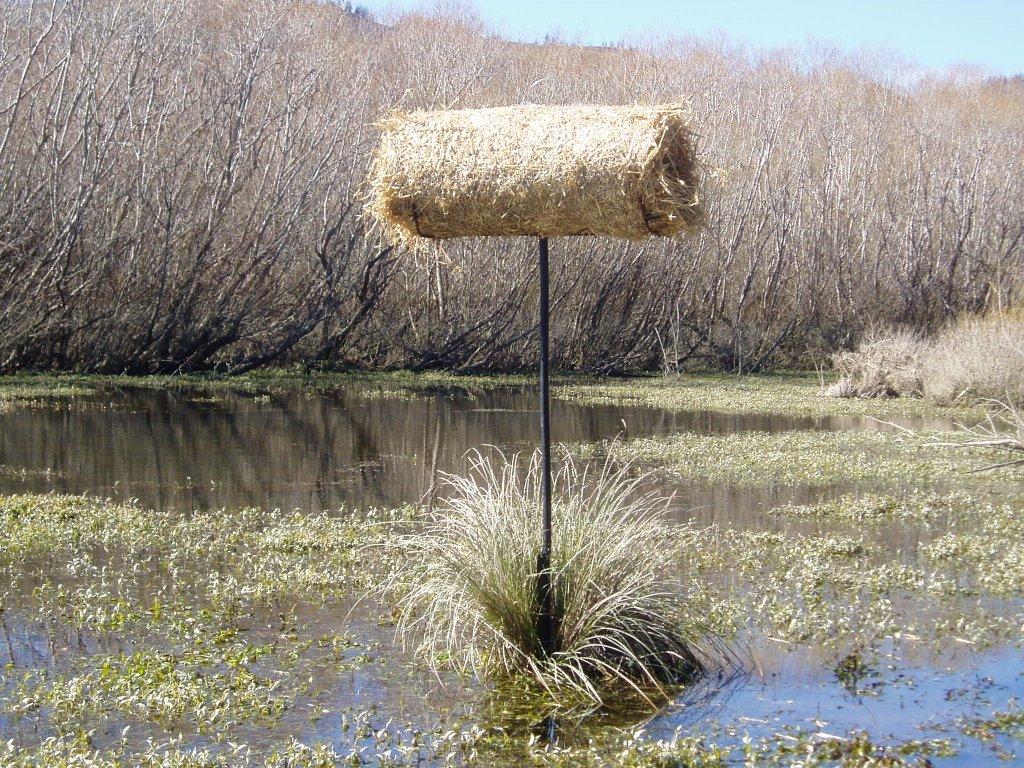 Wellington Fish & Game staff are appealing to farmers and other landowners to give mallards a helping hand with their nesting – more birds means more ducks to hunt.
Wellington Fish & Game staff are appealing to farmers and other landowners to give mallards a helping hand with their nesting – more birds means more ducks to hunt.
Right: An elevated hen house keeps eggs safe from predators.
Floating islands, cheap and simple-to-build, provide predator-free nesting and roosting habitat.
These structures are also particularly useful in areas where large-scale inundation and large water level fluctuations destroy low-lying nesting areas.
Another advantage is that dangling root structures from the plants have the added benefit of stripping nutrients out of your pond, thereby improving the water quality.
You can build a floating island relatively simply using old pallets sitting on plastic drums. Part-fill the drums with water to steady them, tether them in the right location. When planted up (Carex sector works well), watch your island and the ducks that use it thrive.
Hen houses are another option. Both the use and success of hen house nesting structures has been impressive, with claims of up to 80% occupancy and up to 80% nest success.
As the materials used are relatively cheap, this is a cost-effective way to increase mallard productivity.
Hen houses can be installed at any time of the year, but the easiest time to put them in is after the main waterfowl season in July.
They should be placed on sites with as little as 0.2 hectares (40mx50m) but ideally at least half a hectare of open water, about one metre or two from emergent vegetation (e.g. raupo or sedges).
If you’re interested in either of these options to help improve nesting success in and around your pond, just search our Fish & Game website entering the key words ‘hen house’ and ‘floating island’ – you’ll be directed to detailed building instructions that you can download, print off, and tack up in the workshop.
Happy building!